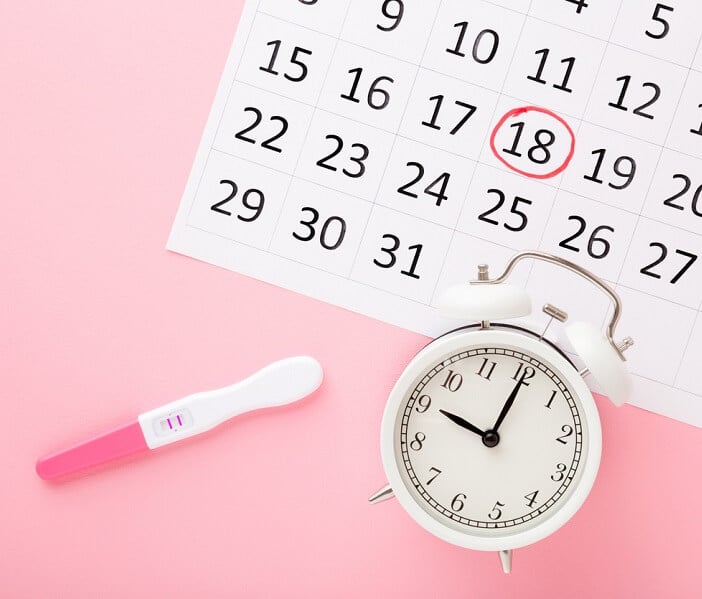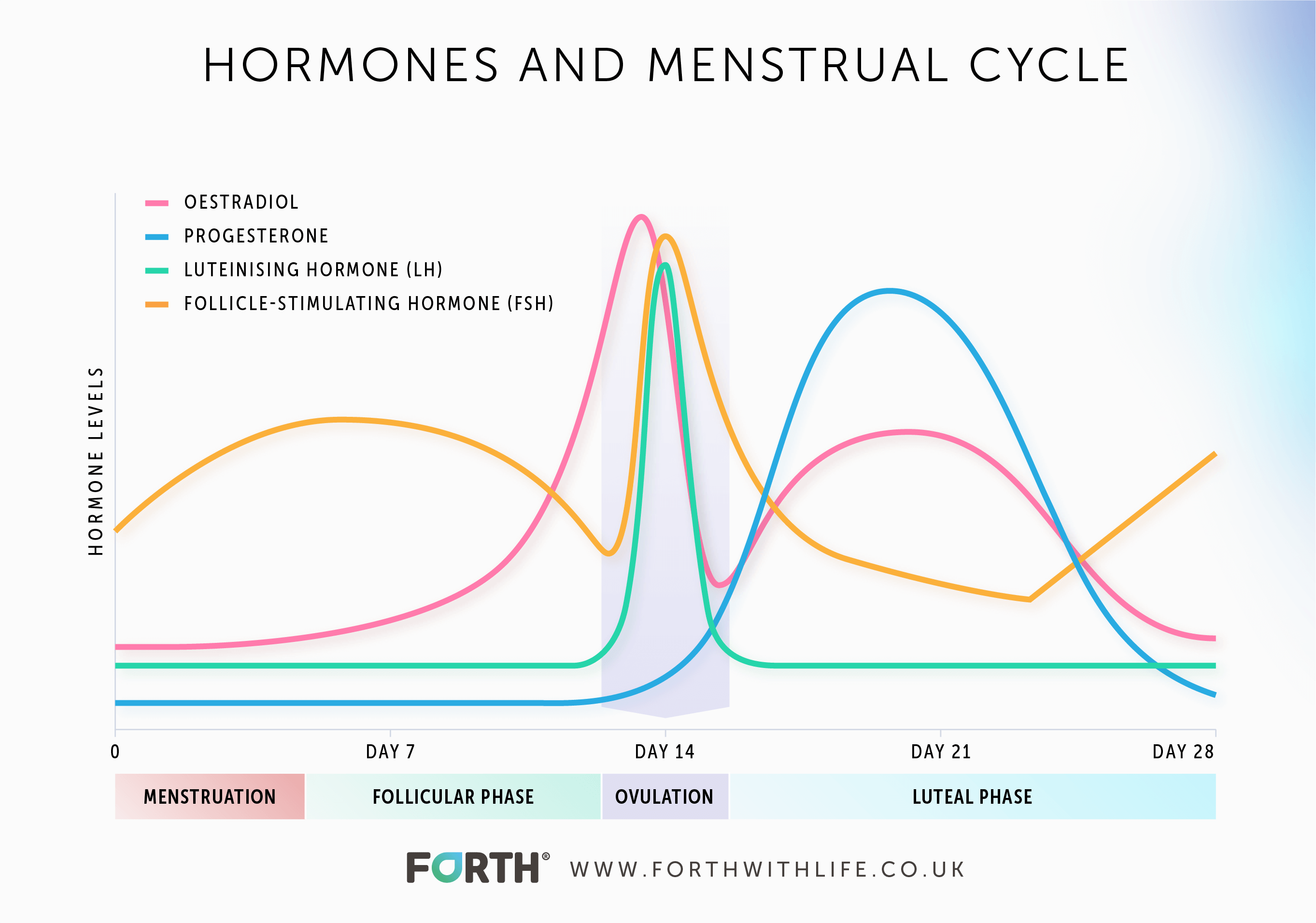5 mins read
How Do I Know When I’m Ovulating?

Ovulation usually occurs once per cycle, but what exactly is it and how do you know when you are ovulating?
The best way to identify if you are ovulating is with a female hormone blood test. Our innovative, advanced female hormone blood test, MyFORM™, maps all 4 key female hormones across your menstrual cycle. It provides an in-depth report along with your LH surge and whether or not you have ovulated.
What Is Ovulation?
Ovulation is the process where the hormone changes occurring in the body during the menstrual cycle causes the release of an egg from the ovary. The egg then has the potential to be fertilised and could lead to pregnancy. Ovulation usually happens 10 and 16 days before your next period.
The stages of the menstrual cycle are:
- During the follicular stage which starts on the first day of menstruation, follicle-stimulating hormone (FSH) stimulates follicular growth in the ovaries.
- At the same time, oestrogen prepares your body for pregnancy by thickening the lining of the uterus.
- A surge in oestrogen also causes a rise in another hormone, luteinising hormone (LH). LH causes one of the ovarian follicles to rupture and release an egg (ovulation). It takes up to 4 days for an egg to travel to the uterus where it waits for up to 24 hours for fertilisation before degenerating.
- The luteal phase follows ovulation where the ruptured follicle now forms a structure called the corpus luteum. The corpus luteum releases oestrogen and high amounts of progesterone, preparing the lining of the uterus for a fertilised egg.
- If fertilised, the egg will move to the uterus and attach to the lining. If not, the lining of the uterus is shed, your period starts and a new menstrual cycle begins.

How To Calculate When You’re Ovulating
Ovulation tends to occur on or around day 14 of your menstrual cycle when oestradiol, FSH and LH peak.
To calculate when you will ovulate, you will need to work out your cycle. Each female is different, the lengths of our menstrual cycles are not all the same and so, we will ovulate at different times, our periods may last longer than others and our cycle may be shorter or longer than another female’s. This is all normal. The average length of the cycle is 28 days, but it could be as short as 21 days or as long as 40 days in length.
Ovulation is also referred to as our fertile window and you can only become pregnant if a sperm fertilises an egg. Contrary to popular belief you can’t get pregnant at any time during your cycle. However, if you are not ready for pregnancy, you shouldn’t just rely on this fact, you should also consider contraception to protect against unwanted pregnancy. It is also not possible to get pregnant if ovulation doesn’t occur. Contraception methods such as the combined pill, patch and injection all work by preventing ovulation from taking place.
There are certain signs your body will give you to let you know you may be ovulating:
- The length of your menstrual cycle is a good starting point. Ovulation usually takes place 10-16 days before your period starts.
- Your body temperature rises a little after ovulation has occurred, so you may be able to detect this change with a thermometer.
- Your cervical mucus may be wetter and clearer at the time of ovulation.
- Some women experience sore or tender breasts during ovulation.
- Bloating and tummy pain may also be signs.

How To Check If You’ve Ovulated
At the time of ovulation, there are changes in hormone levels that can be detected using ovulation predictor kits. The home ovulation kit works by measuring the changing levels of luteinising hormone and identifies the most fertile days in each of your cycles. You can also achieve greater accuracy of ovulation through a lab analysed progesterone test. This test is taken on day 21 of your cycle (or 7 days before the end of your cycle). A result above 30 nmol/L suggests that ovulation has occurred, whilst levels below 5 nmol/L indicate that the ovary has failed to release an egg.
If you find it difficult to track your menstrual cycle, you could try using an app dedicated to tracking your cycle. These apps can help you to track your period and ovulation. Some also allow you to log other information such as your flow, the sanitary products you used, pain, sex, moods and your cervical fluid, all of which you can use to monitor your menstrual cycle.
Summary
In summary, ovulation is the release of an egg from the ovary. One of the most accurate ways to check you have ovulated is through a lab analysed 21-day progesterone test.
You can use a period tracker to log your cycle which may help you work out when you may ovulate.
You can also use our advanced female hormone test, MyFORM™, to gain greater insight into your hormone fluctuations across your entire menstrual cycle. It measures all 4 key hormones – FSH, LH, oestrogen and progesterone – and can help identify if your hormones are fluctuating as expected for your age. This test is suitable for women who are planning to start a family, have come off hormonal contraception and have a natural menstrual cycle.
Article references
-
Reed, B, G and Carr, B, R. (2015). The Normal Menstrual Cycle and The Control of Ovulation. Endotext.
-
Su, H, W et al. (2017). Detection of Ovulation, A Review of Currently Available Methods. Bioengineering and Translational Medicine: 2, pp 238-246.
-
Tiplady, S et al. (2013). Home Ovulation Tests and Stress in Women Trying to Conceive: A Randomized Controlled Trial. Human Reproduction: 28(1), pp 138-151.
This information has been medically reviewed by Dr Thom Phillips
Thom works in NHS general practice and has a decade of experience working in both male and female elite sport. He has a background in exercise physiology and has published research into fatigue biomarkers.

Dr Thom Phillips
Head of Clinical Services
Related articles
Like this article? Here are some more based on similar topics.



